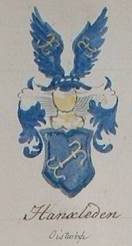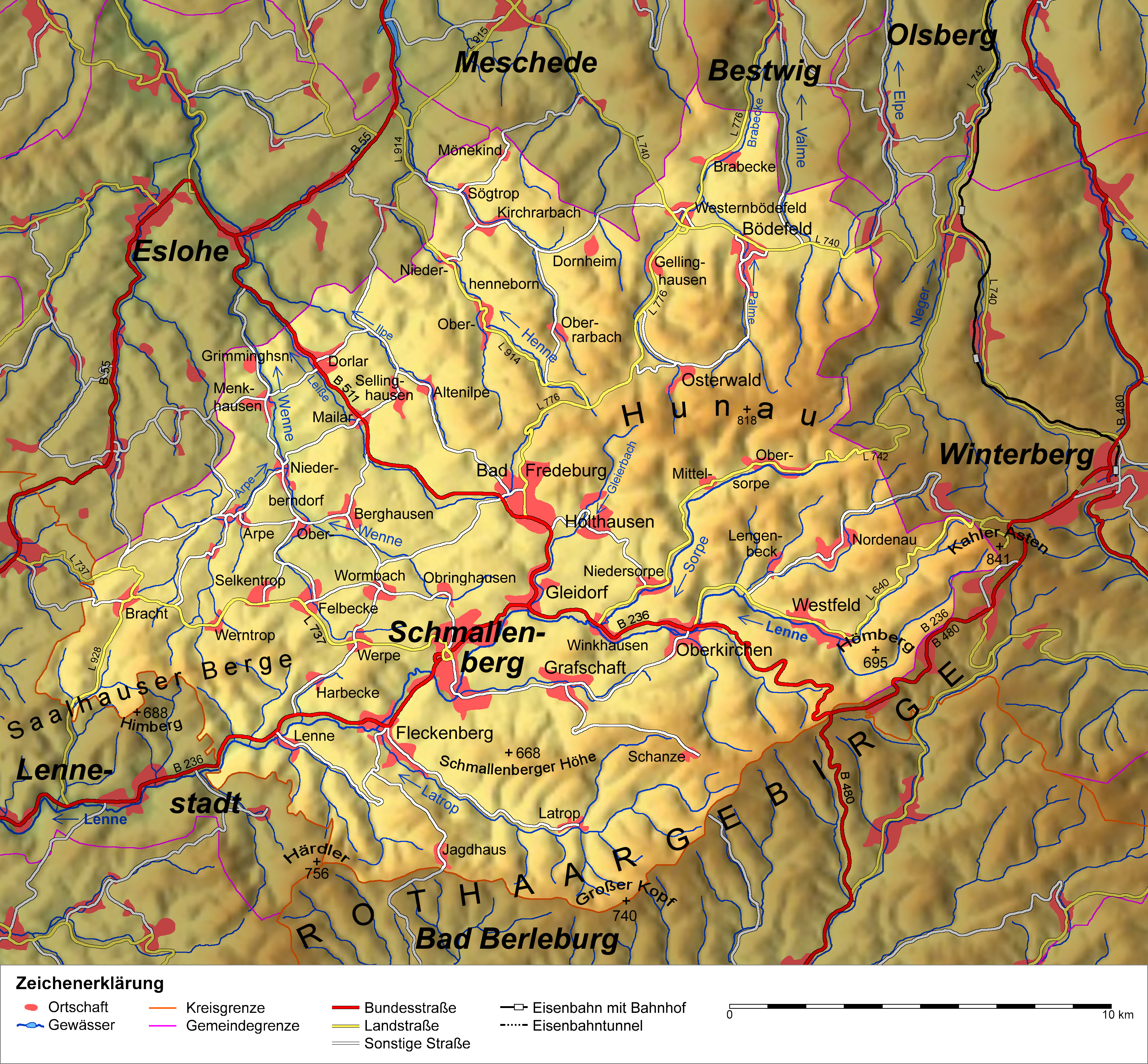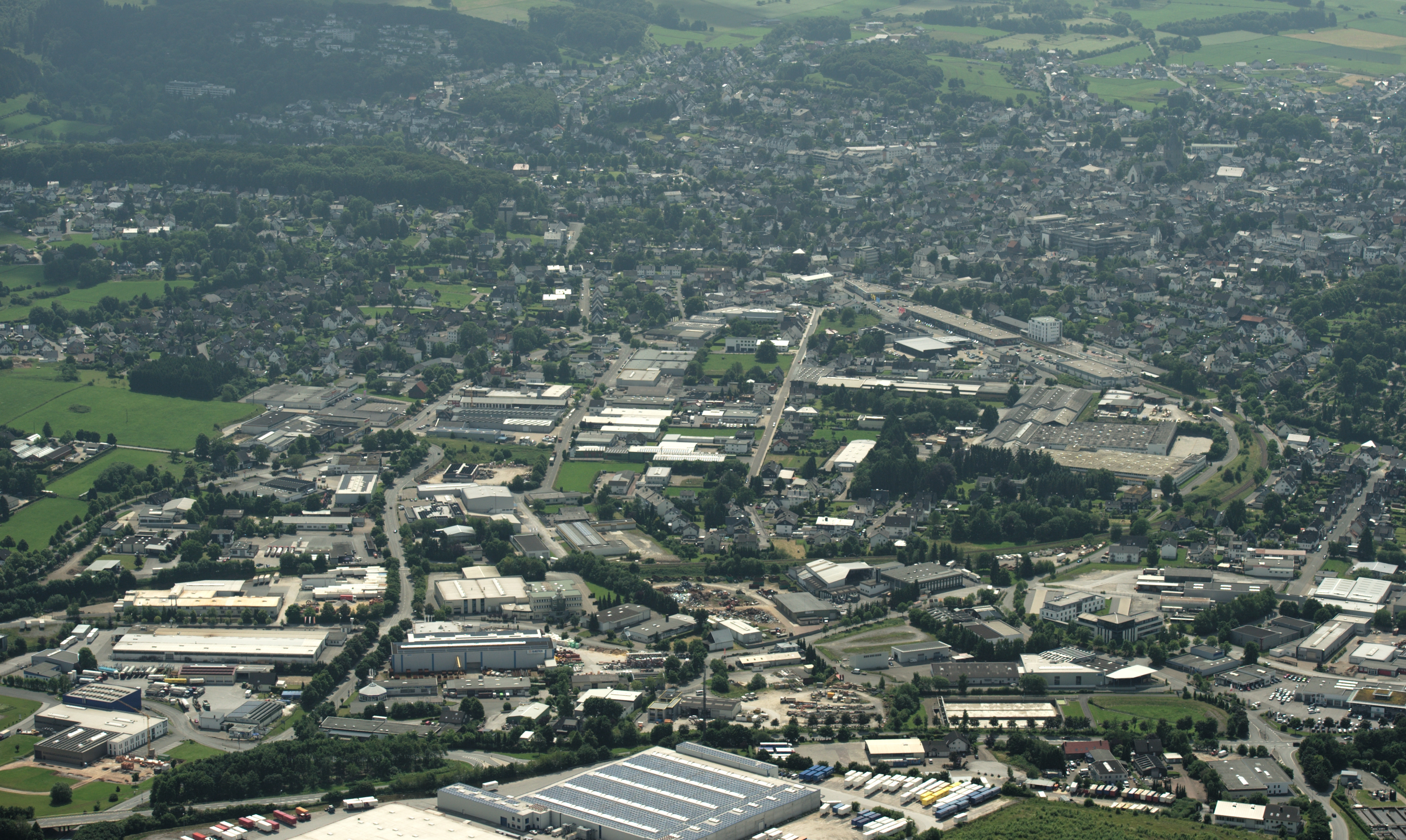|
Hanxleden
The Hanxleden is a Westphalian noble family whose seat is the village of , today part of Schmallenberg in the district of Hochsauerland in Germany. In the 14th and 15th centuries the family provided several bailiffs (''Amtmänner'') of Fredeburg. History Family tree ''Siegfried von Hanxleden'' (b about 1180, d after 1279) lived as knight (''Ritter'') in Hanxleden and took part in the Fifth Crusade from 1217 to 1221. After his return he founded, together with his neighbour, the Lord (''Herrn'') of Sögtrop, a church and a rectorate on the common estate boundary, from which the village of Kirchrarbach developed. ''Albert von Hanxleden'' (b about 1200), was mentioned about 1216 and may have been his son. ''Johann I von Hanxleden'' (b about 1260) was mentioned in 1326 and may have been a grandson of Albert von Hanxledens. ''Goddert I von Hanxleden'' (b about 1290) was 1327-1358 mentioned. He was Lord (''Burgmann'') of Grevenstein, Fredeburg and Schwarzenberg as well as ba ... [...More Info...] [...Related Items...] OR: [Wikipedia] [Google] [Baidu] |
Bödefeld
Bödefeld is a locality in the municipality Schmallenberg in the High Sauerland District in North Rhine-Westphalia, Germany. The village has 1102 inhabitants and lies northeastern of the municipality of Schmallenberg at a height of around 488 m. The river Palme flows through the village. Bödefeld borders on the villages of Gellinghausen, Westernbödefeld, Brabecke, Osterwald, Obervalme (Bestwig), Lanfert, Hiege and Walbecke. The first written document mentioning ''Buodevelden'' dates from 1072 in a charter from Grafschaft Abbey of bishop Anno of Cologne. Hunold von Hanxleden was bailiff of Fredeburg and Lord (Herr) of Bödefeld. In 1410 he was granted permission by the Electorate of Cologne to build the castle of Bödefeld. Construction lasted from 1425 to 1428. The village used to belong to the municipality of Freiheit Bödefeld in Amt Fredeburg until the end of 1974.Statistisches Bundesamt (Hrsg.): Historisches Gemeindeverzeichnis für die Bundesrepublik Deutschland. Name ... [...More Info...] [...Related Items...] OR: [Wikipedia] [Google] [Baidu] |
Bödefeld Castle
Bödefeld is a locality in the municipality Schmallenberg in the High Sauerland District in North Rhine-Westphalia, Germany. The village has 1102 inhabitants and lies northeastern of the municipality of Schmallenberg at a height of around 488 m. The river Palme flows through the village. Bödefeld borders on the villages of Gellinghausen, Westernbödefeld, Brabecke, Osterwald, Obervalme (Bestwig), Lanfert, Hiege and Walbecke. The first written document mentioning ''Buodevelden'' dates from 1072 in a charter from Grafschaft Abbey of bishop Anno of Cologne. Hunold von Hanxleden was bailiff of Fredeburg and Lord (Herr) of Bödefeld. In 1410 he was granted permission by the Electorate of Cologne to build the castle of Bödefeld. Construction lasted from 1425 to 1428. The village used to belong to the municipality of Freiheit Bödefeld in Amt Fredeburg until the end of 1974.Statistisches Bundesamt (Hrsg.): Historisches Gemeindeverzeichnis für die Bundesrepublik Deutschland. Na ... [...More Info...] [...Related Items...] OR: [Wikipedia] [Google] [Baidu] |
Schmallenberg
Schmallenberg ( Westphalian: ''Smalmereg'') is a town and a climatic health resort in the High Sauerland District, Germany. By area, it is the third biggest of all cities and towns of the state of North Rhine-Westphalia and the second biggest of the region of Westphalia. With small Schmallenberg central town and the rural Bad Fredeburg Kneipp health resort the town has two urban settlements. Additionally, 82 villages and hamlets belong to the town's territory. Also being called “the Schmallenberg Sauerland”, the Town of Schmallenberg is famous for its total of fiveStadt Schmallenberg: Kurort health resorts and nineSchmallenberger Sauerland: Golddörfer Schmallenberg und Esloh villages which have been awarded gold for their beauty in the nationwide “” contest. Geography Schmallenberg is located in the southeast of the Sauerland mountainous landscape. The Rothaar Mountains make up a part of the town's territory. Through the central town flows the river Lenne. It is sit ... [...More Info...] [...Related Items...] OR: [Wikipedia] [Google] [Baidu] |
Kirchrarbach
Kirchrarbach is a locality in the municipality Schmallenberg in the district Hochsauerlandkreis in North Rhine-Westphalia, Germany. The village has 273 inhabitants and lies in the north of the municipality of Schmallenberg at a height of around 393 m on the 38. The river Rarbach flows through the village. Kirchrarbach borders on the villages of Hanxleden, Niederhenneborn, , |
Marburg
Marburg ( or ) is a university town in the German federal state (''Bundesland'') of Hesse, capital of the Marburg-Biedenkopf district (''Landkreis''). The town area spreads along the valley of the river Lahn and has a population of approximately 76,000. Having been awarded town privileges in 1222, Marburg served as capital of the landgraviate of Hessen-Marburg during periods of the fifteenth to seventeenth centuries. The University of Marburg was founded in 1527 and dominates the public life in the town to this day. Marburg is a historic centre of the pharmaceutical industry in Germany, and there is a plant in the town (by BioNTech) to produce vaccines to tackle Covid-19. History Founding and early history Like many settlements, Marburg developed at the crossroads of two important early medieval highways: the trade route linking Cologne and Prague and the trade route from the North Sea to the Alps and on to Italy, the former crossing the river Lahn here. A first mention o ... [...More Info...] [...Related Items...] OR: [Wikipedia] [Google] [Baidu] |
Teutonic Knights
The Order of Brothers of the German House of Saint Mary in Jerusalem, commonly known as the Teutonic Order, is a Catholic religious institution founded as a military society in Acre, Kingdom of Jerusalem. It was formed to aid Christians on their pilgrimages to the Holy Land and to establish hospitals. Its members have commonly been known as the Teutonic Knights, having a small voluntary and mercenary military membership, serving as a crusading military order for the protection of Christians in the Holy Land and the Baltics during the Middle Ages. Purely religious since 1810, the Teutonic Order still confers limited honorary knighthoods. The Bailiwick of Utrecht of the Teutonic Order, a Protestant chivalric order, is descended from the same medieval military order and also continues to award knighthoods and perform charitable work. Name The name of the Order of Brothers of the German House of Saint Mary in Jerusalem is in german: Orden der Brüder vom Deutschen Haus der He ... [...More Info...] [...Related Items...] OR: [Wikipedia] [Google] [Baidu] |
Marshal
Marshal is a term used in several official titles in various branches of society. As marshals became trusted members of the courts of Medieval Europe, the title grew in reputation. During the last few centuries, it has been used for elevated offices, such as in military rank and civilian law enforcement. In most countries, the rank of Marshal is the highest Army rank (equivalent to a five-star General of the Army in the United States). Etymology "Marshal" is an ancient loanword from Norman French (cf. modern French ''maréchal''), which in turn is borrowed from Old Frankish *' (="stable boy, keeper, servant"), being still evident in Middle Dutch ''maerscalc'', ''marscal'', and in modern Dutch ''maarschalk'' (="military chief commander"; the meaning influenced by the French use). It is cognate with Old High German ' "id.", modern German ''(Feld-)Marschall'' (="military chief commander"; the meaning again influenced by the French use). It originally and literally meant ... [...More Info...] [...Related Items...] OR: [Wikipedia] [Google] [Baidu] |
Herdringen Castle
Herdringen Castle (German: ''Schloss Herdringen'') is a castle in the ''Ortsteil'' Herdringen of the town of Arnsberg, Germany. It is the seat of the Fürstenberg-Herdringen family and the present building (built from 1844 to 1853 to designs by Ernst Friedrich Zwirner) is one of the most notable secular Gothic revival buildings in Westphalia. History The Herdringen manor was first mentioned in a document in 1376. It belonged to the von Ketteler family until 1543, and then to the von Westrem family. In 1618, the Paderborn prince-bishop Dietrich von Fürstenberg bought it and inherited it from his nephew. Since then, the property has belonged to the Barons of Fürstenberg. The three-winged outer bailey was built between 1683 and 1723. The actual castle was built between 1844 and 1853 according to plans by Ernst Friedrich Zwirner. Zwirner also completed the Cologne Cathedral as master builder. The chapel of the castle is therefore a reminder of this important building. One of the ... [...More Info...] [...Related Items...] OR: [Wikipedia] [Google] [Baidu] |
Von Kettler
The term ''von'' () is used in German language surnames either as a nobiliary particle indicating a noble patrilineality, or as a simple preposition used by commoners that means ''of'' or ''from''. Nobility directories like the '' Almanach de Gotha'' often abbreviate the noble term ''von'' to ''v.'' In medieval or early modern names, the ''von'' particle was at times added to commoners' names; thus, ''Hans von Duisburg'' meant "Hans from he city of Duisburg". This meaning is preserved in Swiss toponymic surnames and in the Dutch or Afrikaans ''van'', which is a cognate of ''von'' but does not indicate nobility. Usage Germany and Austria The abolition of the monarchies in Germany and Austria in 1919 meant that neither state has a privileged nobility, and both have exclusively republican governments. In Germany, this means that legally ''von'' simply became an ordinary part of the surnames of the people who used it. There are no longer any legal privileges or constrai ... [...More Info...] [...Related Items...] OR: [Wikipedia] [Google] [Baidu] |
Erwitte
Erwitte () is a town in the district of Soest, in North Rhine-Westphalia, Germany. Geography Erwitte is situated approximately 8 km south of Lippstadt and 15 km east of Soest. Neighbouring municipalities * Lippstadt * Geseke * Rüthen * Anröchte * Bad Sassendorf Division of the town After the local government reforms of 1975 Erwitte consists of 15 districts: * Erwitte (6510 inhabitants) * Eikeloh (518 inhabitants) * Merklinghausen/Wiggeringhausen (179 inhabitants) * Horn-Millinghausen (894 inhabitants) * Berenbrock (309 inhabitants) * Seringhausen (65 inhabitants) * Stirpe (1079 inhabitants) * Ebbinghausen (201 inhabitants) * Böckum (209 inhabitants) * Völlinghausen (811 inhabitants) * Schallern (291 inhabitants) * Norddorf (159 inhabitants) * Schmerlecke (732 inhabitants) * Weckinghausen (67 inhabitants) * Bad Westernkotten (4097 inhabitants) International relations Erwitte is twinned with: * Aken (Germany) History Officially the town of Erwitte is mention ... [...More Info...] [...Related Items...] OR: [Wikipedia] [Google] [Baidu] |
Brilon
Brilon (; Westphalian: ''Brailen'') is a town in North Rhine-Westphalia, central Germany, that belongs to the Hochsauerlandkreis. Geography Brilon is situated on the Brilon Heights at an altitude of about 450 m on the upper reaches of the river Möhne. The town lies between the Arnsberg Forest nature reserve to the west and the Lake Diemel nature reserve and the Hoppecke to the south-east. Neighboring municipalities Division of the town After the local government reforms of 1975 Brilon consists of 17 districts: * Alme (1.273 inhabitants) * Altenbüren (1.453 inhabitants) * Bontkirchen (553 inhabitants) * Brilon Town (14.513 inhabitants) * Brilon-Wald (595 inhabitants) * Esshoff (80 inhabitants) * Gudenhagen/Petersborn (1.273 inhabitants) * Hoppecke (1.330 inhabitants) * Madfeld (1.395 inhabitants) * Messinghausen (898 inhabitants) * Nehden (503 inhabitants) * Radlinghausen (129 inhabitants) * Rixen (143 inhabitants) * Rösenbeck (858 inhabitants) * Scharfenberg (1.533 ... [...More Info...] [...Related Items...] OR: [Wikipedia] [Google] [Baidu] |





